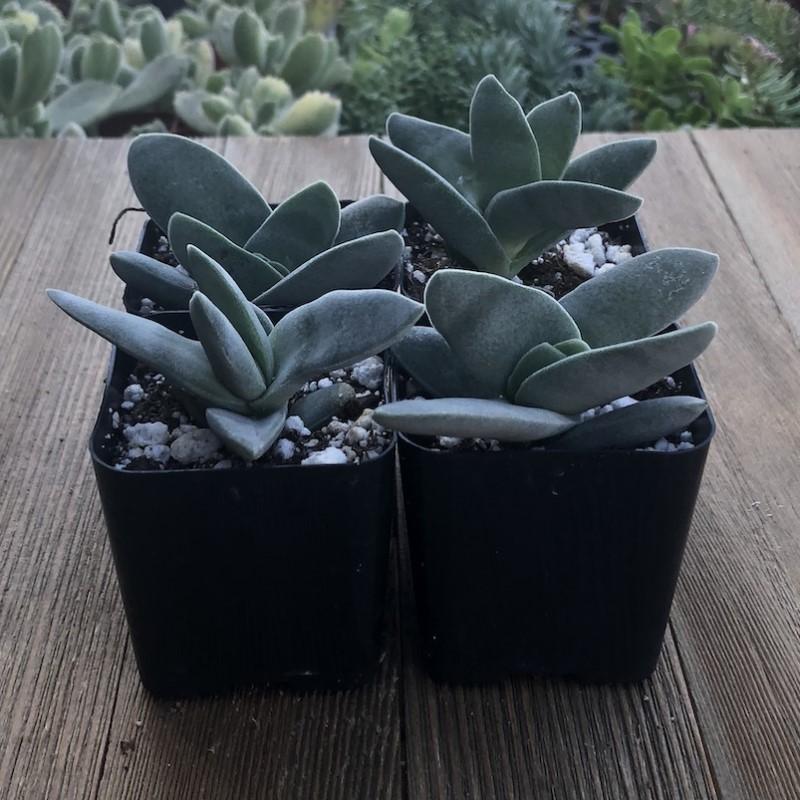Directly from the nursery
Directly from the nursery


There's lots to love about the blue-gray Crassula falcata - AKA Propeller plant AKA Airplane plant. Let's get the obvious elements we love the most, and then dive into some specific care information to ensure your Propeller plant thrives.
First, the shape! What's not to love about the odd-shaped, propeller leaves on this plant? The leaves sprout from the stem. This is an upright grower, so it just keeps on growing their wing shaped leaves in an overlapping pattern.
The shape and color makes it an excellent thriller in when mixed in a succulent arrangement. The foliage is a consistent blue gray color with a frosty coating of farina on the leaves. Farina is naturally produced by the plant to help protect it from sunlight. It works almost like a sunblock, and should not be removed from the plant.
Speaking of growing, you can expect the Crassula Propeller Plant to max out at roughly 9 - 12 inches tall. The leaf width will usually be no more than 6 inches wide.
Like most Crassula's, the Propeller is a wonderful indoor plant option. If you can provide it with bright indirect sunlight, early morning sun, or artificial light, it will be just fine. Avoid hot direct sunlight afternoon sunlight, and dark areas. Dark areas will make it stretch out.
In the Spring and Summer months this plant is actively growing. It produces new babies during this time. I have seen 2 inch plant produce offsets, so don't be surprised if you notice them sooner than later.
The blooms are downright gorgeous on these. In the Spring and Summer, these produce showy orange flower blooms. They are a wonderful pop of color in your gardens and potted arrangements.
Available now in 2 inch size. Because of their oblong leaves, they are usually too wide to ship safely in their nursery pots, and are shipped bare root as a result.
The leaves are sometimes tinged with red in bright sunlight and make fascinating potted specimens if grown in a shallow dish rather than wide pots. Though it is a slow grower, when established in the right conditions, this Crassula can live many years.
The Crassula falcata is not a sun-lover and will benefit from some shade or filtered light. Avoid direct sunlight during the hottest part of the day, especially in summer months.
The ideal growing conditions for a Crassula falcata are 10-12 hours of cool temperatures and bright light year round with no more than 3 hours of direct sunlight per day.
The easiest way to propagate the Crassula is to propagate from cuttings. Cut the branch in half at a node and with a sharp knife, scrape away some of the green leaf material until it exposes clean wood. Allow for 1-2 weeks- sometimes longer- before planting the cutting to allow for callusing to occur.
Plant the cuttings in a cactus or succulent potting mix or a mixture of one part loam and two parts sand with adequate drainage and proper watering practices.
During warmer months, Crassula falcata can be grown outdoors when given a little shade and occasional water. If you live in a warm dry area, try to keep it in moist soil and provide some protection from the afternoon sun.